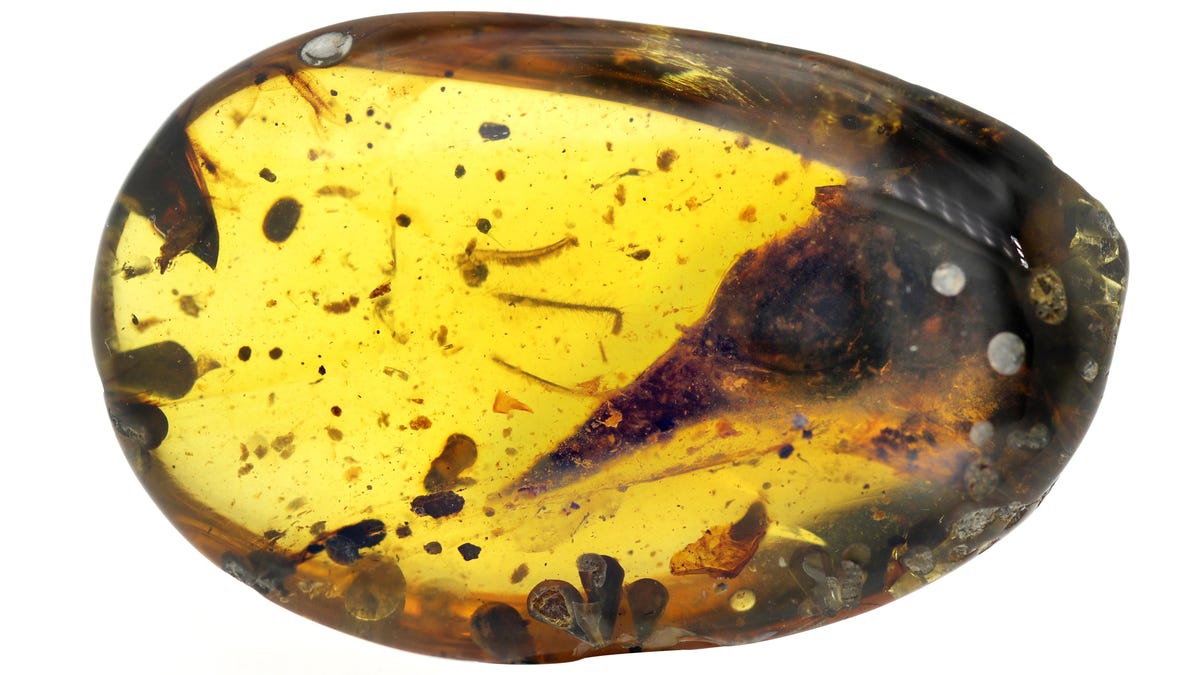Smallest dinosaur found trapped in 100-million-year-old amber
A new species of dinosaur is described for the first time from an exquisitely preserved (and incredibly small) skull.

The new find -- a tiny bird skull trapped in amber.
The bird-like skull of a tiny new species of dinosaur has been discovered trapped in amber at an archaeological site in northern Myanmar. Scientists say the fossil find represents the smallest dinosaur from the Mesozoic era to date and its diminutive size makes it smaller than the smallest living bird found on Earth today.
"When I first saw this specimen it just blew my mind," Jingmai O'Connor, a paleontologist with the Chinese Academy of Sciences and co-author on the paper, said in a Nature video. "I had literally never seen anything like this."
The skull is estimated to be nearly 100 million years old, according to details of the remarkable find published Wednesday in the journal Nature. The find measures just over 15 millimeters in length, around the same size as the diameter of a US penny. Analysis of the skeletal features suggest the tiny creature was mature, had really big eyes and a lot of tiny teeth. For that reason, the new species has been given the scientific name of "Oculudentavis khaungraae" with the generic name "Oculudentavis" derived from the Latin for "eye-teeth-bird". Its species name relates to the person responsible for donating the specimen.
To study the skull, the team ran the amber specimen through a specialized scanner that can determine features down to millimeter scales and generate a 3D reconstruction of the skull. Using the reconstruction allowed the team to infer how Oculudentavis may have lived and its eating habits. The reinforced skull also suggests it may have had a stronger bite than similar size species and likely fed on small insects.
"Oculudentavis was just weird," O'Connor said. "The fact the skull is very fused, the fact is has lots of teeth, the fact it has these really big eyes all suggest that, despite its teeny, tiny size -- it was a predator."
The authors write it is "clearly unlike" any other bird.
"Its unique anatomical features point to one of the smallest and most ancient birds ever found."
Studying amber -- hardened, yellowed tree resin -- has yielded a number of important discoveries for paleontologists. The mind immediately wanders to the fictionalized world of Jurassic Park, where scientists were able to create dinosaurs by extracting blood from a mosquito embedded in the stuff. That wildly impossible feat makes a good story, and even though the truth is much less sci-fi, amber is particularly useful because it's super efficient at preserving structures, often including animal and plant material.
Amber though, can't trap bigger things (a T-Rex is certainly off the table, as are dinosaurs the size of chickens), so it's uncommon to find bony specimens in the fossilized resins.
"Amber preservation of vertebrates is rare, and this provides us a window into the world of dinosaurs at the lowest end of the body-size spectrum," Lars Schmitz, a biologist at the W.M. Keck Science Department and co-author on the paper, said in a press release.
Further refining the technologies used to study amber samples will help paleontologists paint a better picture of ancient vertebrate biology and physiology. O'Connor notes there exists a backlog of amber samples still to study and to "stay tuned" for more amazing finds.

